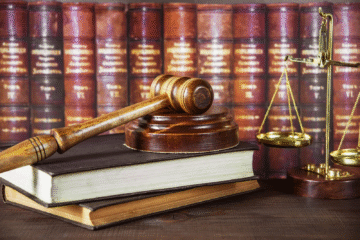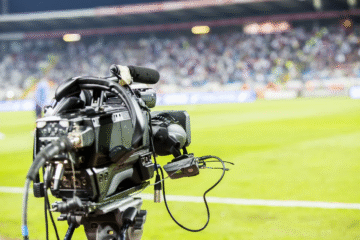
This article is written by Prakriti Vinayak of B.A.LL.B (HONS) of 4th Semester of G.H.G Institute of Law, Ludhiana, an intern under Legal Vidhiya.
ABSTRACT
This article delves into the use of technology in officiating sports. It examines the evolution of technology in sports from earlier times to use of artificial intelligence in modern times. It discusses the role played by key technologies in transforming sports sector and later shed light on legal and regulatory frameworks present in India and around the globe. It also advocates for direct central legislation in India to regulate the use of technology in the sports sector. Further it also analyses the growth of artificial intelligence and the Esports market as they both form a crucial segment in sports sector. In later part it discusses about the legal challenges present in curbing the use of technology and finally the paper concludes by providing valuable suggestions to regulate the use of technology in sports realm.
KEYWORDS
Artificial Intelligence, Esports, Virtual Assistant Referee (VAR), Hawk-Eye technology, Golf line technology, GPS, Virtual Reality and Augmented Reality.
INTRODUCTION
The world of sports is continuously evolving and technology is playing a key role in its evolution. In the past, the performance of athlete was primarily based on their abilities, talent and coaching provided to them, but now with integration of technology in sports, it has revolutionized the performance of athletes and teams. Wearable devices like GPS trackers and smartwatches monitor heart rate, movement patterns and energy expenditure allowing athletes and coaches to analyse data in real time as this can help them to improve their performance in competitions by working on their shortcomings. Beyond training, technology has also improved the fairness and accuracy in decision-making process of competitive sports with advanced technologies like VAR (Video Assistant Referee), Hawk-Eye, and goal-line technology as they have reduced the human error and increased the accuracy in decision-making process. Sports sector is also impacted with advancements in AI (Artificial Intelligence) as its use is continuously increasing. According to one estimate, the artificial intelligence market in sports is projected to reach a value of $30.98 billion by 2031, up from US $6.12 billion in 2024, reflecting a spectacular compound annual growth rate (CAGR) of 26.1% from 2024 to 2031[1] But the use of technology in sports is not free from controversies.
For instance, during the 2022 FIFA World Cup, a crucial Video Assistant Referee (VAR) decision was made during the Japan vs. Spain match, which had a significant impact on the outcome. Japan’s second goal was disallowed by the referee for the ball being out of bounds, but after a VAR review, it was determined that the ball had not fully crossed the goal line. The decision stood, and Japan went on to win 2-1.
In addition, Esports sector is emerging with immense potential for growth and many youngsters are building their career in this domain. Governments worldwide are investing in Esports, as they see it as a lucrative opportunity for economic growth. In India, there are 568 million gamers and over 9.5 billion gaming app downloads in 2023. Certainly, it is true that integration of technology in sports has enhanced the performance of athletes and teams, but its use should be regulated so that a balance can be carved out between its effective use and spirit of sports. This article further explores the evolution, integration of technology in officiating sports.
EVOLUTION OF TECHNOLOGY IN SPORTS
It is no secret that the world of sports has changed completely as compared to how it looked a century ago. In earlier times, people relied heavily on human judgement in sports. The Outcome of the sporting event was dependent on the accuracy in the decision-making by the sporting officials. Basic tools like measuring tapes, scorecards and stopwatches were used. Stopwatches were used in Olympics for the first time in 1896, which took place in Athens and their use continued till the coming of electronic time-keeping around 1960s. In 1936, electronic scoring was used in sporting events and by 1955, instant replay feature was used in Hockey to review for goal. By 1980s, hear rate monitoring devices appeared and were used mainly used by professional athletes. In 1991, serve speed technology was introduced by IBM at Wimbledon. The technology utilised the radar sensors and data systems to measure the speed of tennis serves. Around 1995, live-streaming in sports took place , it was a baseball game between New York Yankees and Seattle mariners.
In 2000, Orad Hi-tec systems introduced virtual imaging technology which included virtual world record Line. It was a virtual line projected in pool that indicated the pace needed to break the world record. Which marked a significant step in the integration of technology and sports.
Hawk-eye technology was used in cricket for first time on 21st May 2001 during Pakistan and England cricket match. Hawk-eye technology in tennis was first introduced in 2003 and made its debut in Wimbledon in 2007. In football also Hawk – eye technology has been used since 2013-2014. In 2010 GPS technology was used to collect player performance data and statistic in Rugby. Goal line technology was used in FIFA in 2014 for the first time. In 2016 VAR technology was used in international football match between France and Italy[2].
Various technological inventions and advancements are bringing the evolution in sports. Moreover, with the constant use of artificial intelligence, the world of sports is evolving further, and it will continue to do so.
KEY TECHNOLOGIES TRANSFORMING SPORTS
One of the key technology that is transforming the sports sector is VAR (Video Assistant Referee). It is a technology that uses video footage to help referees in the decision-making process. It uses cameras to track the ball and players. It has the ability to review decisions for goals, penalties and offside. It can also provide instant replays. It is widely used in sports like football and soccer. In recent times, VAR has increased fairness and transparency in the sporting events. However, VAR is not free of criticism. Many critics argue that VAR decisions are time-consuming, which disrupts the flow of the game. Moreover,As the domain of artificial intelligence continuously evolves so is its use in the sports sector. In recent years, the use of AI has considerably increased in sporting events. The information and insights provided by AI are transforming athletic competition, thus evolving and improving the way in which athletes perform, train and recover. It also provides highly personalized training plans depending on the needs and wants of the athlete. Coaches and athletes can use the information provided by AI to make tailored suggestions for improvement. It also helps them to make strategic decisions as AI can identify the patterns and trends of the opposing player and provide the best recommendations to make a strategic game plan in order to defeat the opposite player. Not only are athletes and coaches enjoying the benefits provided by AI but is it also facilitating sports referees and judges in making the best possible decisions. AI helps reduce human error , provide more consistency in evaluations, and also helps to eliminate human emotions in scoring.
For example, At the Paris Olympics 2024[3], broadcasting services utilized AI to streamline internal workflows, enhance the viewer experience, enrich storytelling, and provide better explanations of certain sports events.
The use of AI in sports also has some disadvantages as the over dependence on technology in sports is further leveraging up. Moreover, the results produced by AI are not always correct as it is very much possible that AI algorithms may inadvertently introduce biases based on the data they are trained on. The usage of AI also comes at a heavy cost thus increasing the budget and expenditure of sporting events. Additionally, the Global Positioning System technology has been in use in sports from some time . With the use of electronic performance and tracking system (EPTS) devices, teams can capture data on speed, distance travelled and Position of player on the field. Furthermore, the use of VR and AR technologies have become increasingly important in sports, particularly for training, simulation, and fan engagement. VR allows athletes to immerse themselves in simulated game scenarios, providing a controlled environment to practice and refine skills. Meanwhile, AR enhances fan experiences, offering interactive features in stadiums. Both technologies are transforming how training is approached and how fans experience sports, making the overall engagement more dynamic and engaging.
LEGAL AND REGULATORY FRAMEWORK FOR USE OF TECHNOLOGY IN SPORTS
There is no doubt about the fact that the integration of technology into sports has revolutionised the performance of athletes, the coaching given by experts and experience gained by the spectators. from digital tools like video assisted referees to GPS trackers have helped in enhancing each and every aspect of the sports realm. However, it should also be noted that despite the various advantages offered by technology, it also brings new challenges with it, especially in the governance and regulation domain.
Global Perspective:
There are various international organisations and governing bodies around the globe that are working to create regulations for the use of technology in sports in order to preserve the spirit of sports.
FIFA has adopted various technologies such as video assistant referees and goal-line technology in order to maintain fairness and accuracy in sports. On the other hand, the International Football Association, which is a self-regulatory international body, governs the rules of football. From time to time, IFAB has regulated the use of technology to address concerns about over-reliance , delays and consistency issues. Moreover, the use of technology in multi-sport events like the Olympics is supervised by the International Olympic Committee. At the Paris Olympics 2024, AI was widely used but its use was closely monitored to ensure fairness and transparency in sporting events. Additionally in recent times, the Esports industry has risen significantly and is projected to reach US $4.8 billion in 2025 and is expected to reach US$5.9 billion in 2029 demonstrating an annual growth rate of 5.54 percent from 2025 to 2029[4]. As it has a huge foothold it becomes important to regulate Esports and for this purpose Esports Integrity Commission was established in 2016.
Indian Perspective
In India, there is no specific regulation that governs sports law but there are several laws that indirectly impact the sports sector. Various regulatory bodies have been formed to regulate sporting events and ensure fairness and transparency in the process.
Legal framework
The Ministry of Youth Affairs and Sports oversees and regulates the use of technology in sports in India. A number of information technology projects have been initiated in this regard like National Sports Repository System, Khelo India mobile application, and Annual calendar for training and Competition (ACTC) portal. In 1984, Sports Authority of India was set up under the Department of Sports. It supports the use of technology for athlete training and performance enhancement. Recently, in December 2024 Hindustan Aeronautics Limited signed a Memorandum of Understanding with Sports Authority of India and National Sports Development Fund (NSDF) to establish the HAL – SAI high performance centre in Bengaluru[5]. It aims to leverage science and technology to enhance the performance of athletes. Moreover, federations like the BCCI and All India Football Federation play a vital role in regulating the use of technology in their respective sports. Additionally National Sports Governance Bill 2024 was also introduced.This bill[6] aims to improve the governance and ethics of sports in India. This bill aims to improve the dispute Resolution mechanism, promote the welfare of sportsperson and ethical governance. It also aims to create a transparent system by creating National Sports Repository System to digitize athlete and coach information.
Furthermore, IT act 2000 also plays a vital role, this act[7] sets a critical legal foundation for India in addressing challenges related to the integration of technology in various sectors, including sports. The IT Act governs key aspects such as data privacy, cybersecurity and cybercrime which are becoming increasingly relevant in the sports domain due to the ever-increasing use of technological gadgets in sports. In addition, Esports is a billion-dollar industry and has become very popular among youth. Many young Indians are seeing their future in this domain so it becomes extremely important for the government to regulate this sector. India officially recognised Esports as a multi-sport event in December 2022. The Amendment Rules 2023 of the IT (Intermediary Guidelines and Digital Media Ethics codes) Rules 2021[8] mark an important step toward ensuring and safeguarding the rights of players against online scams and fraud.
LEGAL CHALLENGES
There is no uniformity among different sports organizations, countries, and jurisdictions as they all have different regulatory standards for addressing technology in sports, thus creating confusion and conflicts. Moreover, There are conflicts and disputes around the ownership and use of technological innovations, especially in the context of sports tech patents or broadcasting rights. But it is also important to remember that technology evolves at a faster pace, and laws are not able to evolve that quickly as it has to pass through various stages before enactment, unlike technology. So, laws are always left behind in order to keep up with technological advancements.
CONCLUSION
It is true that the integration of technology in sports brought numerous advantages for athletes and coaches, but it has also created numerous significant challenges like data privacy, fairness and manipulation. Technology has enhanced the performance of athletes and has also improved the decision-making process during sporting events. But many critics also point out that technology forms a disadvantage for athletes who do not have great financial resources to access these technologies. And in India there is no direct single law that governs the use of technology in sports which further complicates the situation. There is a need for uniform and proper regulations to strike a correct balance between sports and technology as the future of sports is undeniably interlinked with technological advancements.
REFERENCES
- Hire Intelligence, Evolution of Technology in Sport, Hire Intelligence, https://www.hire-intelligence.co.uk/evolution-of-technology-in-sport/ (Last visited Feb. 2, 2025)
- Lawphoria, Sports Law: Legal Concerns with the Introduction of Technology, Lawphoria (Apr. 5, 2022), https://www.lawphoria.in/blog/sports-law-legal-concerns-with-the-introduction-of-technology/5-april-2022. (Last visited Feb. 2, 2025)
- Akai Negi, Sports Law and Athlete Rights, Drishti Judiciary (Apr. 10, 2024), https://www.drishtijudiciary.com/blog/sports-law-and-athlete-rights (Last visited Feb. 2, 2025)
- Dale Johnson, Why Japan’s Winning Goal vs. Spain Was Awarded by VAR, ESPN (Dec. 2, 2022), https://www.espn.in/football/story/_/id/37634475/why-japans-winning-goal-vs-spain-was-awarded-var (Last visited Feb. 2,2025)
- Sneha Mahawar, Esports and the Legality of Competitive Gaming: An Overview, iPleaders (Dec. 23, 2023), https://blog.ipleaders.in/esports-and-the-legality-of-competitive-gaming-an-overview/. (Last visited Feb. 2, 2025)
[1] Available at Coherent Market Insights, Artificial Intelligence in Sports Market Size and Trends Analysis Report By Technology (Machine Learning, Natural Language Processing, Computer Vision), By Application (Player/Team Performance Analysis, Fan Engagement, Injury Prevention), By Region, And Segment Forecasts, 2024 – 2031, https://www.coherentmarketinsights.com/industry-reports/artificial-intelligence-in-sports-market#:~:text=Artificial%20Intelligence%20in%20Sports%20Market%20Size%20and%20Trends,26.1%25%20from%202024%20to%202031 (last visited Feb. 2, 2025).
[2] Available at Olympics.com, What Is VAR in Football?, https://www.olympics.com/en/news/what-is-var-in-football (last visited Feb. 2, 2025).
[3] Available at International Olympic Committee, AI and Tech Innovations at Paris 2024: A Game Changer in Sport, https://www.olympics.com/ioc/news/ai-and-tech-innovations-at-paris-2024-a-game-changer-in-sport (last visited Feb. 2, 2025).
[4] Available at Statista, Esports – Worldwide, https://www.statista.com/outlook/amo/esports/worldwide#:~:text=The%20revenue%20in%20the%20Esports,US%245.9bn%20by%202029 (last visited Feb. 2, 2025)
[5] Available at Deccan Herald, HAL-SAI High-Performance Centre to Come Up in Bengaluru, https://www.deccanherald.com/india/karnataka/bengaluru/hal-sai-high-performance-centre-to-come-up-in-bengaluru-3307911 (last visited Feb. 2, 2025).
[6] National Sports Governance Bill, 2024, Bill No. 125 of 2024
[7] Information Technology Act, 2000 (India), No. 21 of 2000
[8] Information Technology (Intermediary Guidelines and Digital Media Ethics Code) Amendment Rules, 2023, (India), G.S.R. 618€, 2023
Disclaimer: The materials provided herein are intended solely for informational purposes. Accessing or using the site or the materials does not establish an attorney-client relationship. The information presented on this site is not to be construed as legal or professional advice, and it should not be relied upon for such purposes or used as a substitute for advice from a licensed attorney in your state. Additionally, the viewpoint presented by the author is personal.




0 Comments